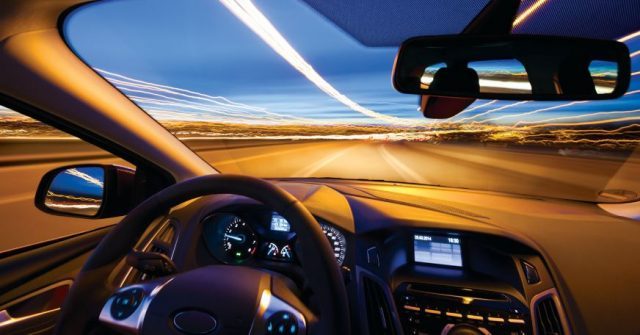 According to an IBM Institute for Business Value study, “A New Relationship — People and Cars,” vehicles are becoming part of the Internet of Things (IoT) as new mobility options transform consumers’ lives and expectations. Today’s cars are evolving from a mode of transport to a new kind of moving data center with onboard sensors and computers that capture information about the car, its driver, occupants and surroundings. At the same time, conversational interfaces are enabling drivers to interact with their vehicles more naturally and, with machine learning, cars can get to know their drivers better and personalize the experience accordingly.
According to an IBM Institute for Business Value study, “A New Relationship — People and Cars,” vehicles are becoming part of the Internet of Things (IoT) as new mobility options transform consumers’ lives and expectations. Today’s cars are evolving from a mode of transport to a new kind of moving data center with onboard sensors and computers that capture information about the car, its driver, occupants and surroundings. At the same time, conversational interfaces are enabling drivers to interact with their vehicles more naturally and, with machine learning, cars can get to know their drivers better and personalize the experience accordingly.
According to IBM’s studies, cars are increasingly becoming:
1) Self-healing: Vehicles that are able to diagnose and fix themselves and even fix other vehicles with issues without human help.
2) Self-socializing: Vehicles that connect with other vehicles and the world around them.
3) Self-learning: Vehicles with cognitive capability to continuously learn and give advice based on the behavior of the driver, passengers, and other vehicles.
4) Self-driving: Vehicles are moving from limited automation to becoming fully autonomous.
5) Self-configuring: Vehicles adapt themselves to a driver’s personal preferences — everything from seat height and position to their drivers’ favorite destinations.
6) Self-integrating: Like other smart devices, these vehicles will be integrated parts of the IoT, connecting traffic, weather, and mobility events as they move around.
Some facts from the study:
- 86% of more than 16,000 respondents in 16 countries expect to own or drive a car in the next ten years.
- Surveyed consumers 35 and older expect their use of personal cars as the primary mode of transportation to drop by 22%; they foresee more than doubling their use of car- and
ride-sharing. - 37% of respondents were very interested in submitting ideas to co-create new automotive products and mobility services.
The report recommends automakers, dealers an mobility solution providers to deliver solutions to meet future vehicle usage shifts
- Develop new ownership models that meet consumer expectations and create alternative revenue streams.
- Create a flexible, innovative brand experience. Design apps and other tools to integrate the use of the car with other transportation options. Develop an open platform where mobility partners can include their offerings.
- Enable prescriptive decision making to optimize transportation choices. Leverage deep analytics and cognitive capabilities to present recommended options. Integrate the consumer’s “mobility persona” to create a more personalized experience.
Appeal to consumers through their digital mobility interest - Segment the digital experience. Create consumer profiling scenarios and digital segmentation models as sophisticated as traditional physical segmentation models. Identify consumers based on their levels of digital mobility interest and use this understanding to better match them to the appropriate level of technology in a vehicle, as well as other suitable mobility solutions.
- Focus on those who are “digitally interested.” Target the Pacesetters and Fast Followers when introducing new digital innovation. Approach these groups for initial responses and then refine new offerings. Build advocates and use them to influence others.
- Convince the others. Influence The Pack and even The Spectators with additional information, experiences and demonstrated proven value. Continue to simplify, automate and personalize the digital experience to gain trust and acceptance.
Car buyers still expect to buy cars from dealerships. Globally, 46 percent of consumers said they would be willing to purchase online from OEMs and 38 percent would purchase on-line from third-party brokers. By contrast, 67 percent of the global sample still said it was important to buy in person from a dealership.